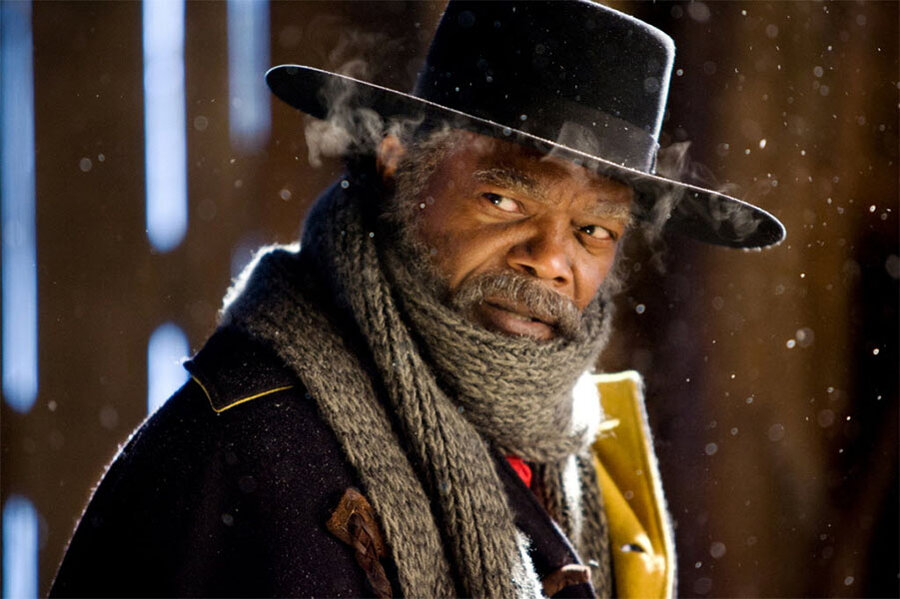'The Hateful Eight' is overscaled and underfelt
Loading...
Quentin Tarantino’s “The Hateful Eight” opens with a six horse-drawn stagecoach galloping through a Wyoming snowscape. The film was shot in 70mm Ultra Panavision and so the vistas are vast. The same cannot be said for the drama occuring inside those vistas.
To be accurate, the main action is preceded by an overture – remember those? Tarantino is nothing if not old school. (There hasn’t been a movie shot with these Ultra Panavision lenses since “Khartoum” in 1966.) The music is by Ennio Morricone, who did the score for Tarantino’s favorite movie, Sergio Leone’s “The Good, the Bad and the Ugly.” “The Hateful Eight” dispenses with the Good and goes with the Bad and the Ugly.
What’s surprising about the film is that, after a suitable interval in the great oudoors, the remainder of its three-hour running time takes place indoors, inside a large stagecoach stop which is en route to a town where the various players in the piece are converging.
Aboard the stagecoach is John “The Hangman” Ruth (Kurt Russell), a bounty hunter with a walrus moustache who is transporting his shackled prisoner, Daisy Domergue (Jennifer Jason Leigh, complete with mossy teeth) to collect his big reward and see her hang. Joining the fray is Major Marquis Warren (Samuel L. Jackson), a former Union soldier and also a bounty hunter, and Chris Mannix (Walton Goggins), a former Rebel soldier who claims he’s the new sheriff in town.
Inside the stagecoach stop, which is large enough to house a battalion, are a few more suspicious varmints, including Oswaldo Mobray (Tim Roth), a Britisher with a bowler hat who claims to be a hangman; Bob (Demián Bichir), who is playing a stereotypical Mexican; Joe (Michael Madsen), a surly cowboy not fond of eye contact; and General Sanford Smithers (Bruce Dern), a former Rebel officer and an arrant racist. It’s a heady stew, except Tarantino overvalues their appeal. It’s clear that things are not what they seem, and, as usual in his films, we wait for the score-settling violence to erupt. It takes an awfully long time for that to happen, and when it does, it’s so garishly over-the-top that the movie becomes a kind of killing comedy. Except I didn’t hear myself laughing.
Tarantino writes crackerjack dialogue with his signature stamp on every line; he has, on occasion, a crackerjack film sense, too. But this attenuated Western whodunit is overscaled and underfelt; the slam-bang mayhem happens for no other reason except that Tarantino has few other emotional (or filmic) resources to fall back on. He’s filmdom’s reigning arrested adolescent. Except for “Jackie Brown,” his least-recognized movie and probably his best, his eight-film career is a euphoria of homages to the mostly pulpy flicks he favors.
Actors love working for him because he provides roles you can – literally – sink your teeth into. It’s fun for a while to see Kurt Russell hamming it up behind his voluminous mustache or Samuel L. Jackson once again raising rafters by laying down the law. But the film is pointless, even as entertainment, because it builds to nothing more than a comic book blood bath. You can’t accuse Tarantino of playing out his second childhood because it’s not clear if he’s ever left his first. Grade: C+ (Rated R for strong bloody violence, a scene of violent sexual content, language and some graphic nudity.)







